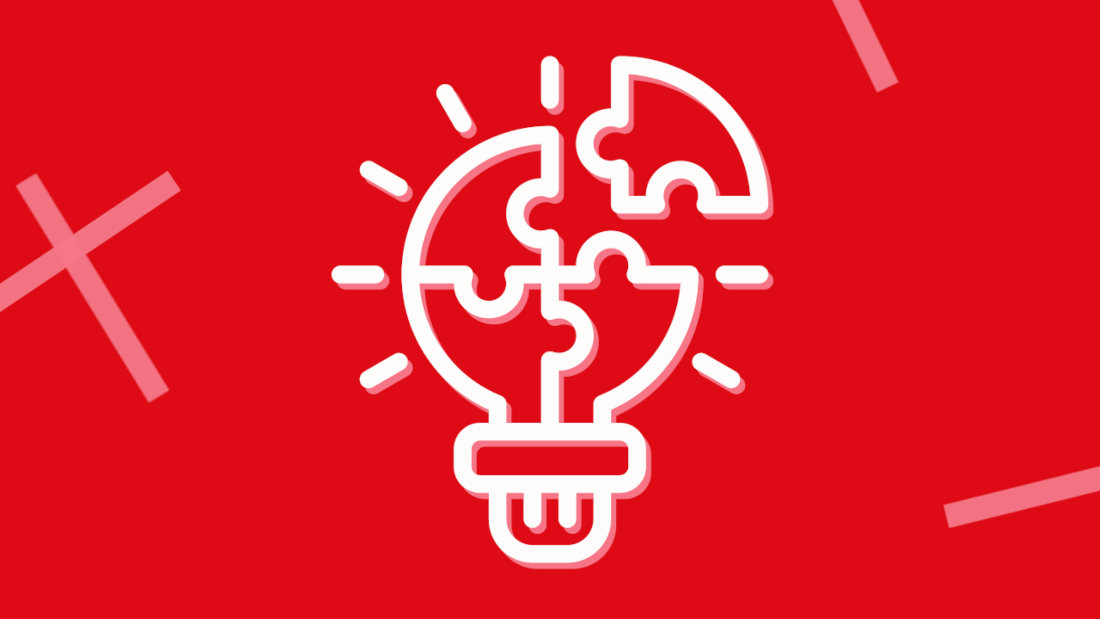Reading today's headlines, it can feel as if the world has nothing but problems. Design can help us overcome that sense of dread.
The last few years seem to have been more volatile and unpredictable. Who could have imagined the disruption caused by Brexit, a global pandemic, a war in the Ukraine, or the rapid progress of generative AI?
Recently, I noticed a word that the media has adopted to describe this constant state of flux: ‘permacrisis'. It was no surprise to me that it was declared ‘word of the year’ for 2022 by the editors of Collins Dictionary.
Research from the World Economic Forum (PDF) showed that out of 12,000 global leaders 84% felt worried or concerned about the outlook for the world.
So, going into the second half of 2023, it’s easy to feel pessimistic.
With challenges come opportunities
A growing interest in sustainability, increasing customer expectations and advances in technology create new opportunities for those who embrace change and challenge the status quo.
But to deal with change, organisations need people who are comfortable navigating ambiguity, with the imagination and confidence to do things better.
They need people who can bridge the gap between problem and solution to get to ‘done’ as fast as possible.
Say hello to design but not as you know it
Design is happening in your organisation, and not only in the obvious departments like product or marketing.
It’s happening when your leadership team considers the potential for generative AI.
It’s happening when your development team makes choices about product features.
And it’s happening when your HR team creates a new employee onboarding experience.
Design in its simplest form is about:
- understanding a current state
- creating an alternative desired future state
- working out how to navigate that gap in the most efficient and effective way
Design is not about how things look. It’s about creating meaningful ideas that deliver measurable value for people and the planet.
The only choice you need to make is whether to do this intentionally, or to cross your fingers and hope for the best.
The designer’s toolbox
Over the last decade the fields of design have multiplied and there are now many different ‘flavours’ of designer.
This can seem mysterious to those who observe from outside workshops full of marker pens and sticky notes.
What this means though is that designers have a much bigger and more effective toolbox to select from.
At SPARCK, we tailor our approach to different problems and situations. This helps ensure we use the most efficient design tools to deliver strategic objectives.
Using these methods and mindsets we enable organisations to navigate the permacrisis in three ways.
1. Design to disrupt
Without innovation and clear direction, organisations can quickly become irrelevant. Those that successfully adapt to technological advances or market shifts, on the other hand, can gain a competitive edge.
But innovation can be risky. New ideas can threaten a company's existing order and organisational change is often challenging.
That's why at SPARCK we believe less in big ideas and more cheap experiments.
Designers in this space are often working on big picture challenges. They’re accompanied by subject matter experts, policy teams, business consultants and technical architects. Together, they explore the problem space to uncover new markets and unmet needs.
Our strategic designers use approaches like, futures thinking and systemic design to empower organisations to imagine the art of the possible, tackle 'fuzzy' problems and create a clear path to the future.
Then using a lean start-up approach, we enable organisations to test hypotheses and build and launch new products and services with the fastest methods and lowest cost. This reduces the risk in evaluating potential opportunities and gets you to market faster.
2. Design to differentiate
There’s no doubt that Covid-19 accelerated digital transformation and many organisations are still trying to catch-up with this new omni-channel 24-7 world.
It feels as though the battle to retain customers has moved beyond digital transformation and onto customer-centred transformation.
At the same time, organisations face the economic challenges of inflation and rising costs.
Many are left asking “How do we do better with less?”
The challenges don't end there, though. Consumers are taking a much closer interest in whether the services and products they use are inclusive, sustainable, and ethical.
At SPARCK, we use a human-centred design (HCD) approach with an emphasis on understanding user needs, business goals and technical possibilities.
We help clients differentiate through exceptional customer experience (CX) and research that enables us to gain insights into user behaviour. That informs more effective decisions about how to achieve strategic objectives.
Our service designers define end-to-end user journeys that tie together human, digital, and physical interactions over time whilst looking for opportunities to reduce cost and improve organisational efficiency.
And content design and product design enable us to create frictionless user experiences for your customers across all devices and interactions.
Ultimately, it's about creating inclusive experiences that work for everyone, and that users love.
3. Design to develop
To successfully navigate the permacrisis, problem-solving skills and the instinct to take action need to be embedded across organisations – not confined to the design team.
If you're looking to experiment with the transformational power of design and build it into your organisational DNA, we can help in many ways.
For example, we might help you identify a beacon project using blended teams to demonstrate the practical value of using human-centred design and agile methodologies to stakeholders and colleagues.
We can equip your teams with methods like design thinking to demystify the creative problem-solving process. This can shift them away from a feature factory mentality, where shipping code is all that matters, and towards a customer-centric view of what delivering value really means.
Your organisation might also benefit from:
- a design maturity assessment
- playbooks to provide guiderails and establish design communities of practice
- ongoing training, mentoring and coaching
Every organisation in the world has a problem to solve
If you’re asking yourself how your organisation can retain or gain new customers, increase sales or reduce costs, or gain a competitive advantage… Then you need design.
Every organisation in the world has a problem to solve. For both themselves and for their customers. Design is the way to do it.
Ending on high note
Despite the permacrisis, I’m optimistic about the future.
History shows that when human beings come together, they have an incredible ability to overcome what seem like insurmountable problems.
Human qualities like resilience, curiosity, creativity, and critical thinking enable us to imagine better futures and create meaningful change.
And in the meantime, maybe I’ll just stop reading the news.
If you'd like to learn more about our design toolbox and how it could help your organisation, you can get in touch with me through the website or by connecting on LinkedIn. I’d love to chat.



